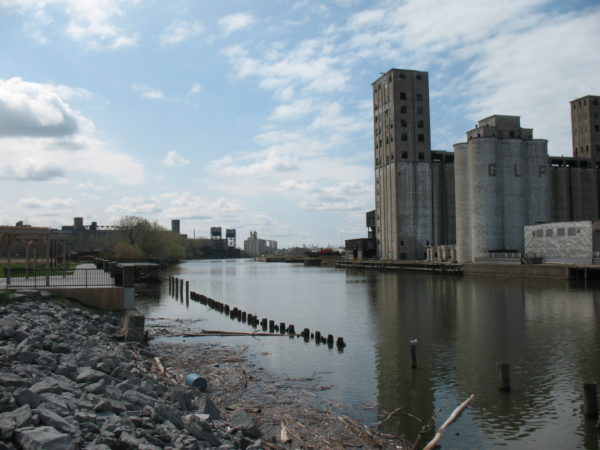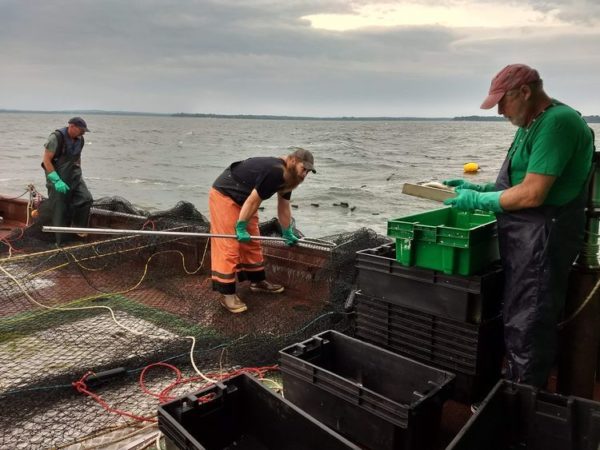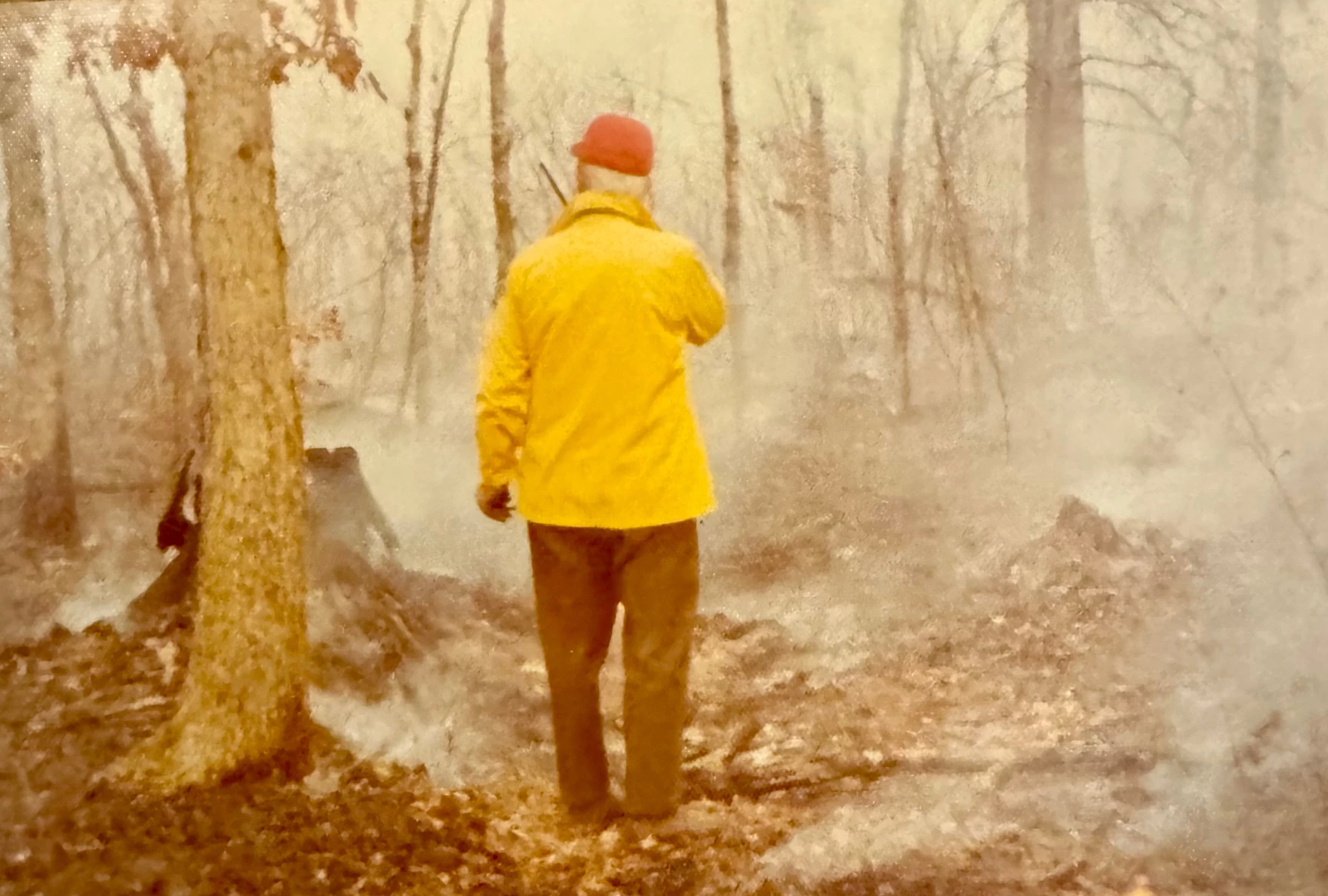
By Daniel Wanschura, Interlochen Public Radio
Points North is a biweekly podcast about the land, water and inhabitants of the Great Lakes.
This episode was shared here with permission from Interlochen Public Radio.
Conservation warden Dave Zeug is on edge. It’s the middle of the spring fire season in central Wisconsin and suspicious fires are popping up all over the area. Dave thinks someone is starting them on purpose.
Days go by. He doesn’t have any clues or leads, and he’s not any closer to solving the case. Out of desperation, Dave turns to a Department of Natural Resources pilot, Darwin Krall. Together, they come up with a plan that’s a real shot in the dark. Darwin will go up in his plane with binoculars and a tank full of gas and look for suspicious activity.
But they’ve never done this before and have no idea if it will work.
Credits:
Host / Producer: Dan Wanschura, with help from David Zeug
Editor: Morgan Springer
Additional Editing: Ed Ronco
Special Thanks: Max Copeland, Tyler Thompson, Paul Damberg, Molly Gardner.
Music: Man in the River, Mosquito Swarm, Canyon Tour, Last Bar Guests, Duck Angels Hurry, No Potatoes on Fire, by Lobo Loco.
Sound: forest fire by tim.kahn, Forest_Fire_Inferno by Dynamicell, Propeller plane by breviceps, Walkie Talkie – Transmission Start by bruce965, Radio Static, by Jovian Sounds, Car Acceleration Inside Car by alexftw123, Small Plane at 100 feet approx by Duophonic, all via Freesound.
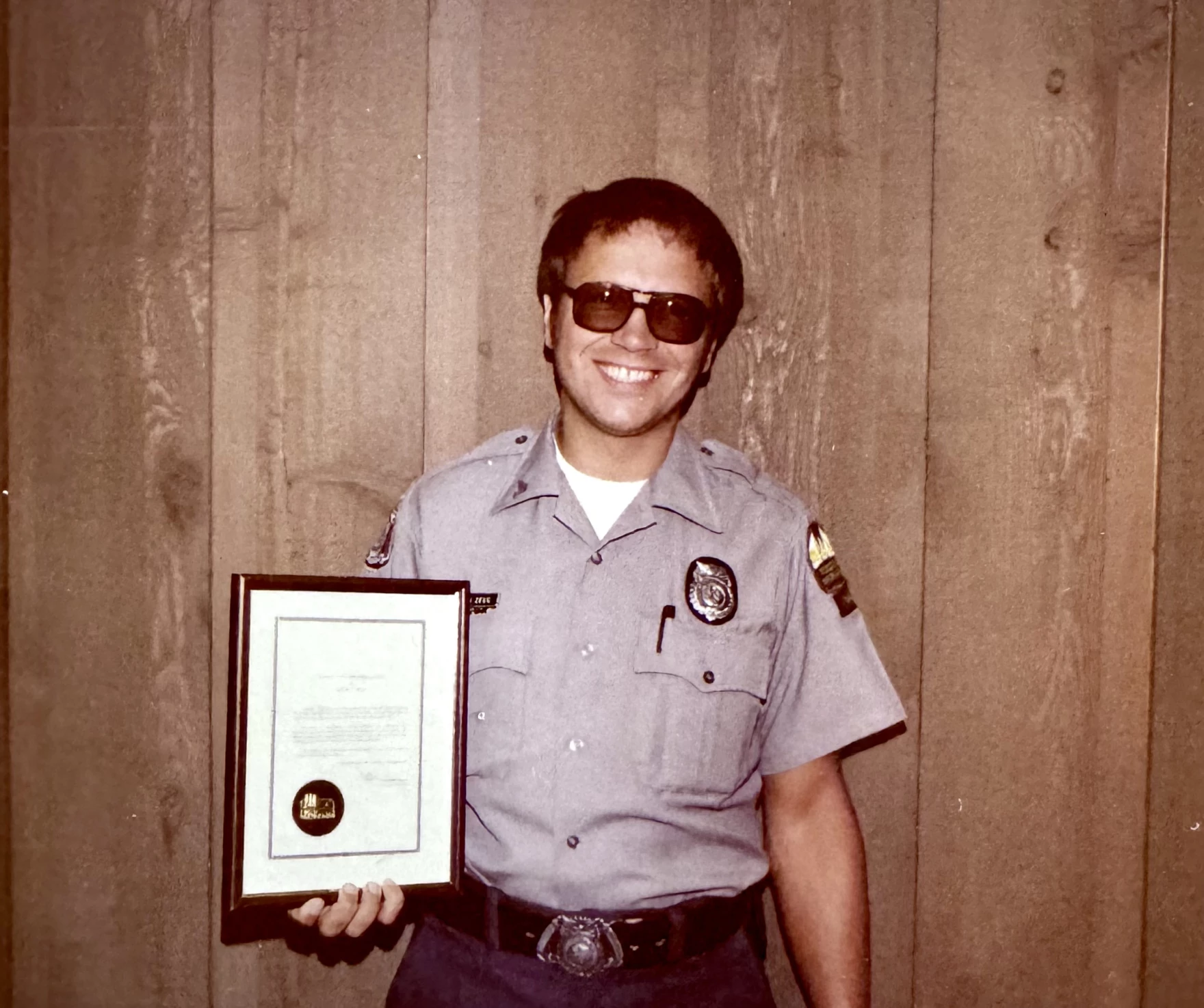
Conservation warden Dave Zeug was recognized for his efforts investigating the origins of forest fires in central Wisconsin in 1977. (credit: Wisconsin DNR / Dave Zeug)
Transcript:
DAN WANSCHURA, BYLINE: This is Points North. A podcast about the land, water, and inhabitants of the Great Lakes. I’m Dan Wanschura.
(wildfire sounds)
Dave Zeug is on edge. He’s on scene as foresters put out a small wildfire in central Wisconsin. It’s the spring of 1984, and it’s dry as a tinderbox. It’s been that way for years.
DAVE ZEUG: We had some terrible fires there in the years before this incident.
WANSCHURA: Dave is a conservation warden with the Wisconsin Department of Natural Resources. Just two years ago, a raging wildfire trapped a firefighter in the middle of some pine trees and killed him. Dave was one of the first to arrive on scene.
(wildfire sounds)
The firefighter’s death is in the back of Dave’s mind as he looks on at this wildfire. He’s on edge because it’s not the first fire to pop up this spring. And Dave doesn’t think they’re accidents. He thinks someone is starting them on purpose. Arson.
DAVE ZEUG: They were on the sides of roads, usually on a straight stretch of road where they could look both ways, make sure nobody was coming, whoever, however the fire started.
WANSCHURA: To figure out if it is arson, Dave says you have to go through a process of elimination.
ZEUG: We know what it’s not. We know it’s not a railroad fire. We know it’s not a campfire. It’s not a rubbish-burning. There’s no residents. Again, this is a very sparsely settled area. When there’s nothing else left, it has to be an arson fire.
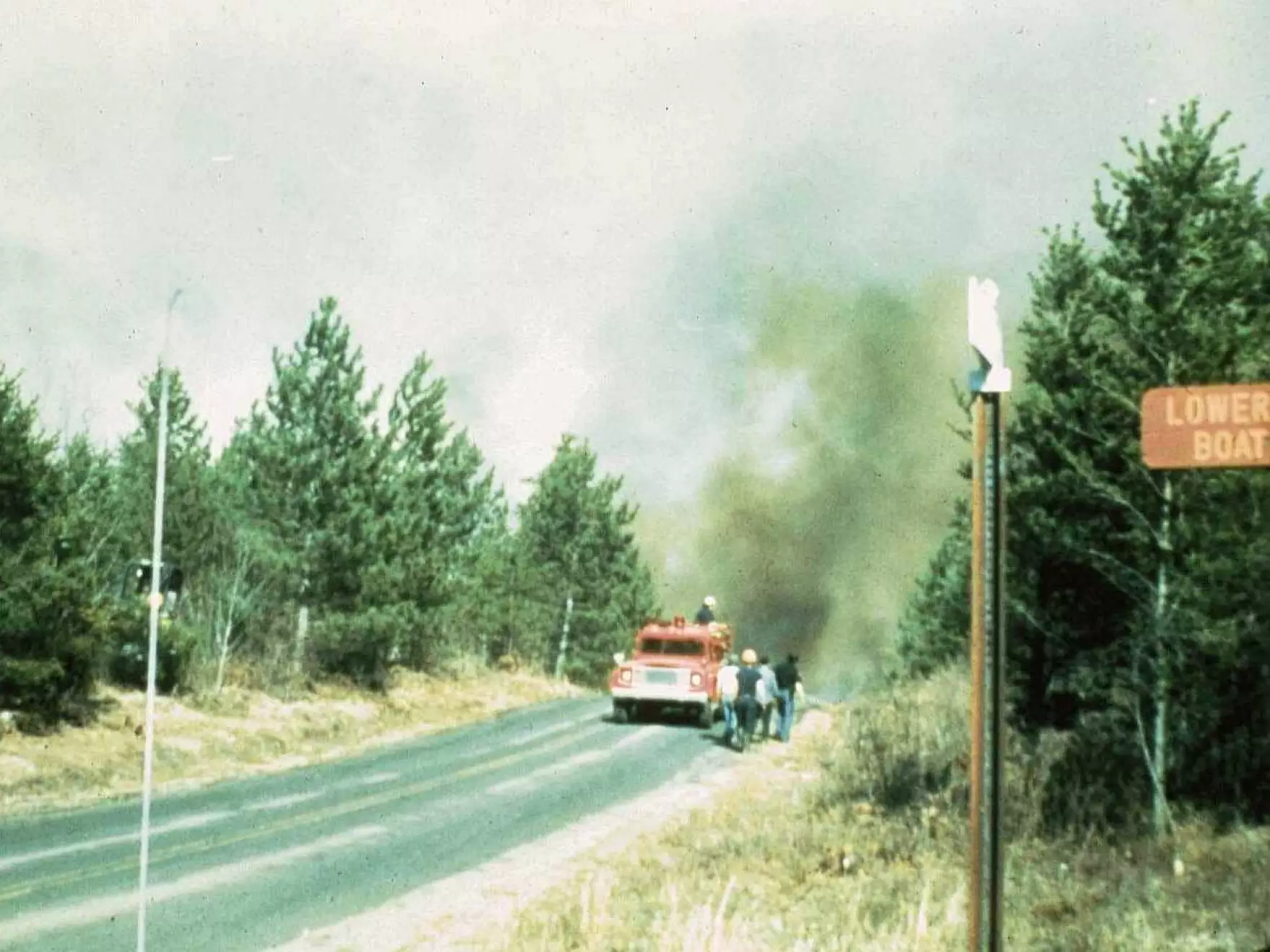
Firefighters fight a wildfire on the side of Lower Mckenzie Road, in Washburn County, Wisconsin in 1977. (Wisconsin DNR / Dave Zeug)
WANSCHURA: The bad news is it looks like this dry spell won’t stop anytime soon. It’s windy, and there’s no rain in the forecast.
ZEUG: We’ve seen what fires can do – millions of dollars of damage, homes destroyed, lives lost – and an arsonist running around out in the countryside was not what we needed.
WANSCHURA: They have to find who is doing this and stop them. So, Dave starts looking for clues and leads. Days go by, and he’s got nothing. That’s when he meets up with a DNR pilot. It’s almost impossible to catch an arsonist in the act, but together they come up with kind of a crazy idea.
ZEUG: And whether it was his idea, or mine, I guess I’m not sure initially, but we decided there was no other way of doing this.
WANSCHURA: The plan is this: the pilot’s gonna go up in a spotter plane – a small, single engine plane – and just look for any suspicious activity below. They’ve never tried this before and Dave says they have no idea if it’s actually going to work.
That story on Points North, coming up right after this.
(sponsor message)
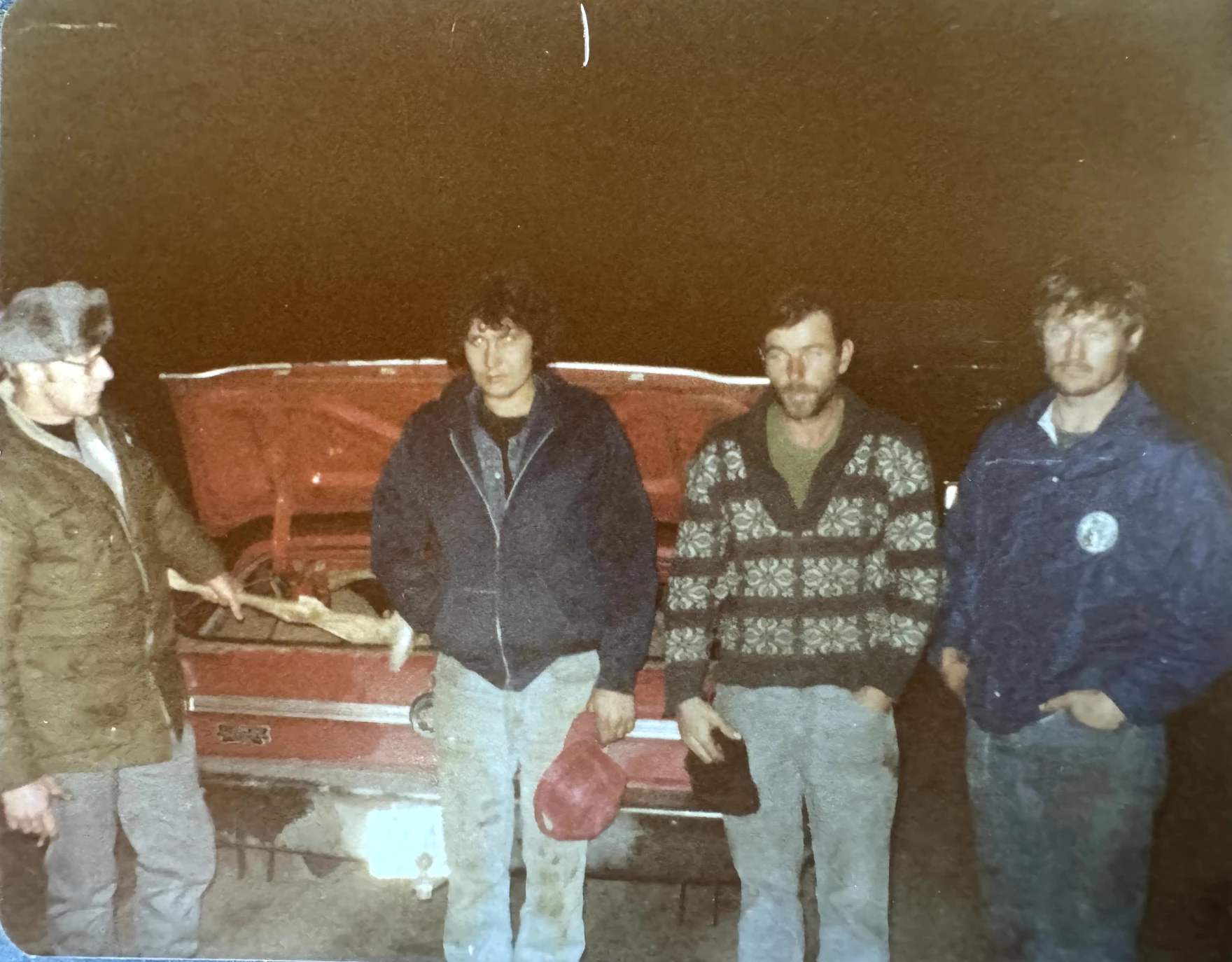
A Wisconsin conservation warden (left) discovers a deer in the trunk of some Wisconsin night deer hunters. They were likely caught shining the deer from a DNR aircraft. (credit: Wisconsin DNR / Dave Zeug)
WANSCHURA: Taking to the skies to catch someone breaking the law wasn’t exactly new. Darwin Krall, the pilot, had been doing it for years to catch poachers.
He’d go up with binoculars and a tank full of gas, float over the rural countryside, and look for suspected deer shiners. When Darwin saw a spotlight pierce the night, he’d report them to wardens below. Wardens like Dave Zeug.
ZEUG: Then he would call us in to make the stop, make the arrest, and we had a lot of business. We did a tremendous amount of work doing that.
WANSCHURA: But this is different. It’s arson. A felony offense.
(sound of flying plane)
WANSCHURA: Darwin drifts high above jack pine, scrub oak forests, and cranberry marshes – watching for slow-moving vehicles. And he’s focused on an area that’s about 8-10 square miles. When the plane’s up in the air, Dave is stationed in his squad car below – waiting and hoping – to hear from Darwin.
The first several weeks are quiet. And very monotonous.
ZEUG: It was hours and hours of boredom. You just wait to get a call on the radio from the pilot.
Yeah, we were frustrated. For one thing, it’s not cheap to fly an airplane.
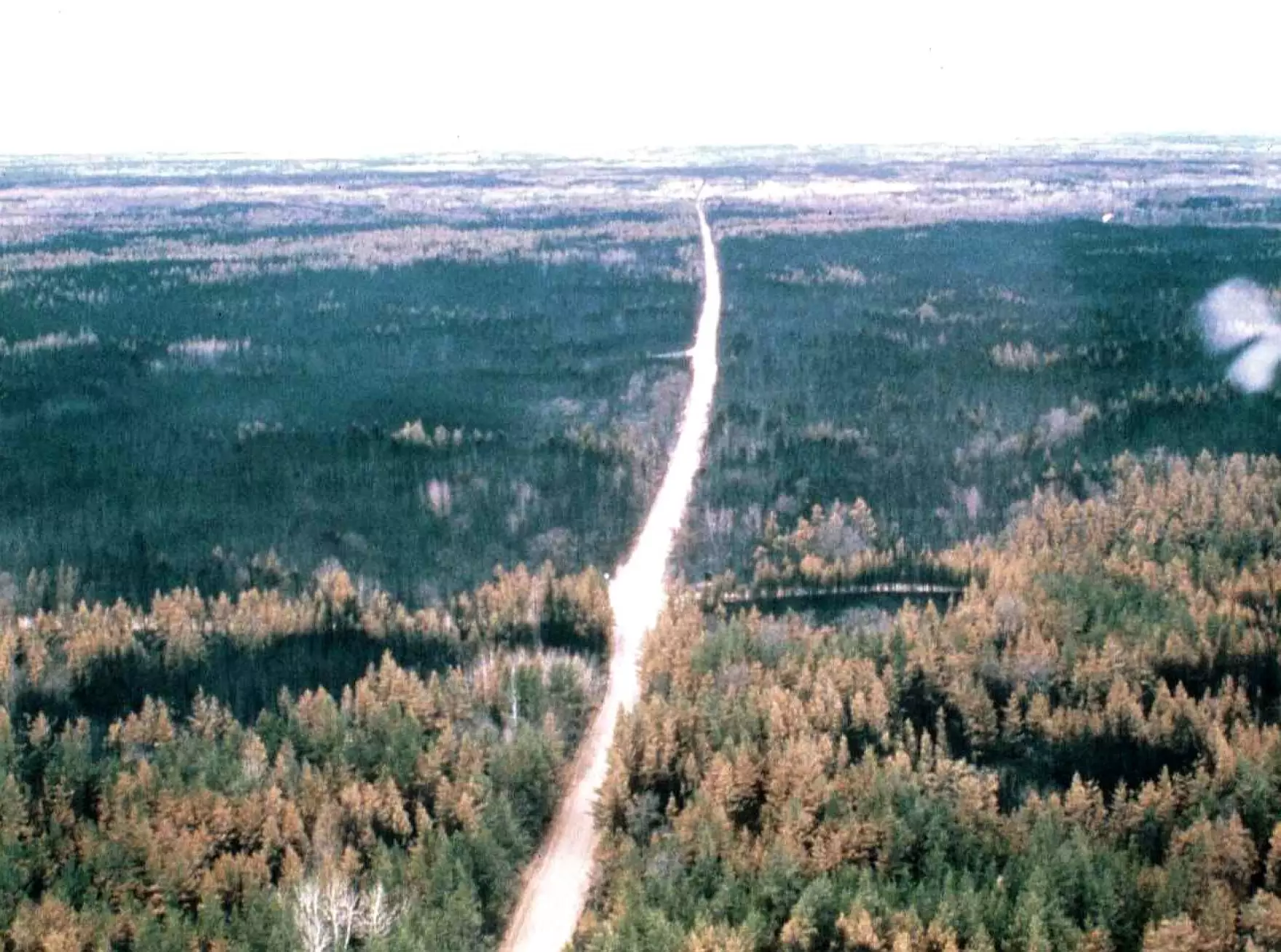
WANSCHURA: One day in early April, Dave meets up with another warden. They’re parked next to each other on a secluded logging road – just waiting around – reading the newspaper, drinking coffee. It’s late afternoon and the two wardens are pretty sure they’re not gonna hear from Darwin the pilot – again. Another lost day. Then, all of a sudden, Dave’s radio crackles to life.
ZEUG: I heard over the radio, C A 3, C 1 5 7.
(radio call sounds)
WANSCHURA: Those were Darwin and Dave’s radio call numbers. After a startled pause, Dave radios back to Darwin. And even though all this happened forty years ago, he vividly remembers what Darwin says next.
ZEUG: He says, I got them. I’ll never forget. He says, I got them.
(radio call sounds)
WANSCHURA: A jolt of adrenaline rushes through Dave’s body.
ZEUG: And that was when the coffee cups went flying and the newspaper went flying and … got in our respective vehicles and roared off.
(sound of car accelerating)
Exaltation, I was just, it was just like, ‘My gosh, I can’t believe we’re going to get these guys.’ And then of course you’re thinking, ‘God, I hope we can get these guys. I hope Darwin has enough fuel left to stay in contact with these people.’
WANSCHURA: Thousands of feet up in the air, the pilot Darwin Krall saw the entire thing unfold. He was watching vehicles with his binoculars. Then all of a sudden, he saw a white station wagon slow down and pull to a stop on the side of County Highway Z. Two guys jumped out and started fires – one on each side of the road. Then, they hopped back in their car and sped off heading north.
So, Darwin starts to drop down thousands of feet. He doesn’t want to lose that station wagon. They get about seven miles down the road when Darwin swoops in. He buzzes right over the station wagon, just to let these two guys know he saw what they did.
(sound of plane flying overhead)
CINDY CASEY-WOODSTRAND: He literally dropped right out of the sky. And I’m sure he scared the pants off of them.
WANSCHURA: At the time, Cindy Casey-Woodstrand was a Forest Ranger for the Wisconsin DNR. She remembers hearing Darwin say he got so close to the guys, he could see their facial expressions.
CASEY-WOODSTRAND: They were very unhappy at having been caught. They knew they were in trouble.
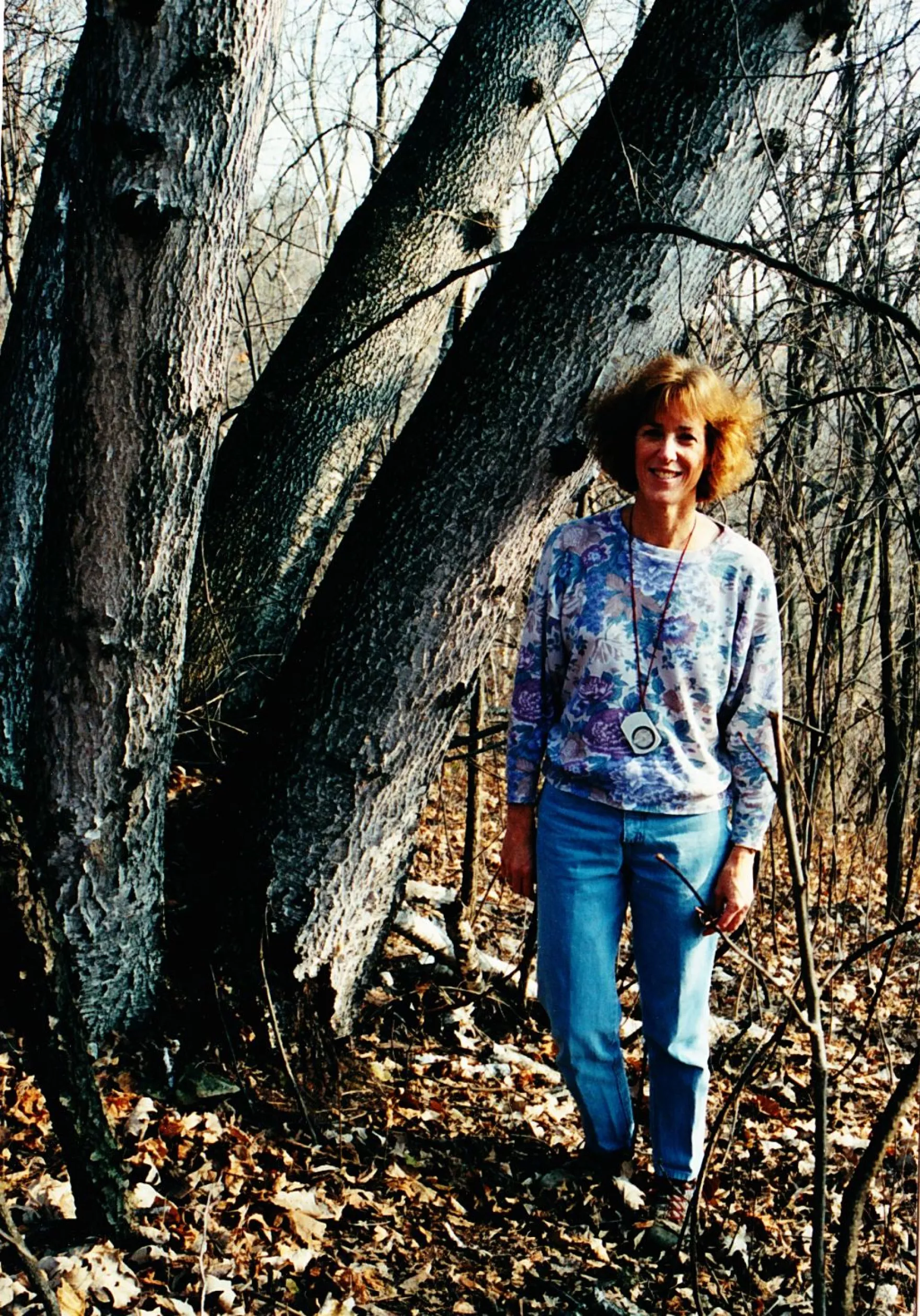
Cindy Casey-Woodstrand posing with a state champion tree in Wisconsin, the largest known specimen of the species. (credit: Cindy Casey-Woodstrand)
WANSCHURA: That’s when things take an unexpected turn. The two guys wheel the station wagon around and head back to the fires. Just as Cindy, Dave, and their partners are also rushing there too.
CASEY-WOODSTRAND: That made it so exciting and, it was exciting too in the sense that as you’re approaching the fire, you really don’t know what to expect. The pilot is telling you what’s going on, but as you’re approaching at that point, we knew that … the fire wasn’t out.
WANSCHURA: Cindy and her partner pull up to the scene.
(wildfire sounds)
CASEY-WOODSTRAND: When we got there, the two individuals … were appearing to put the fire out.
WANSCHURA: She doesn’t talk to them, though. Instead, she jumps into action.
CASEY-WOODSTRAND: Our job was to make sure the fire didn’t go anywhere, to put the fire out, and knowing that Dave was almost on site and knowing that his was the law enforcement job, there was really no reason for us to talk to the guys.
WANSCHURA: Luckily, the wildfires are still very small. Just burning dry grass and leaves.
CASEY-WOODSTRAND: So, it didn’t take much effort to put the fire out, I just unreeled the hose and sprayed some water on it and that was it.
WANSCHURA: By that time, Dave and his partner arrive on scene and take the two guys into custody. Ronald G. Luther and Ronald G. Rosandich. They’re both in their 20s.
ZEUG: They’d been partying all night. They look pretty ragged, pretty rough and head down. I mean, they knew they were in serious trouble. They weren’t at all belligerent or anything … They’d screwed up, and they knew they’d screwed up.
WANSCHURA: Dave takes Ronald Rosandich into his squad and reads him his rights …
ZEUG: ‘You have the right to remain silent.’
WANSCHURA: But Ronald is willing to talk. He tells his story and Dave writes it down. Here are some excerpts read by a voice actor:
RONALD ROSANDICH: I met Ron Luther in a bar in Pittsville … last night about midnight.
We went … to other bars today … and then came here.
From about 5:30 to when we got to where the fire was set, we… talked about setting a fire for fun.
We both used matches to start the fire…at least I did.
I lit the east side of the road and Ron Luther lit the west side.
We chuckled about the fire at first, and then we … saw … the airplane and … he followed us up the road, we figured we were in trouble, so we decided to go back to put the fire out.
I figured that we best not try any of that Dukes Of Hazzard stuff because it would have made things worse.
I wish I had not done this, but we thought it was a way to pass the Sunday afternoon.
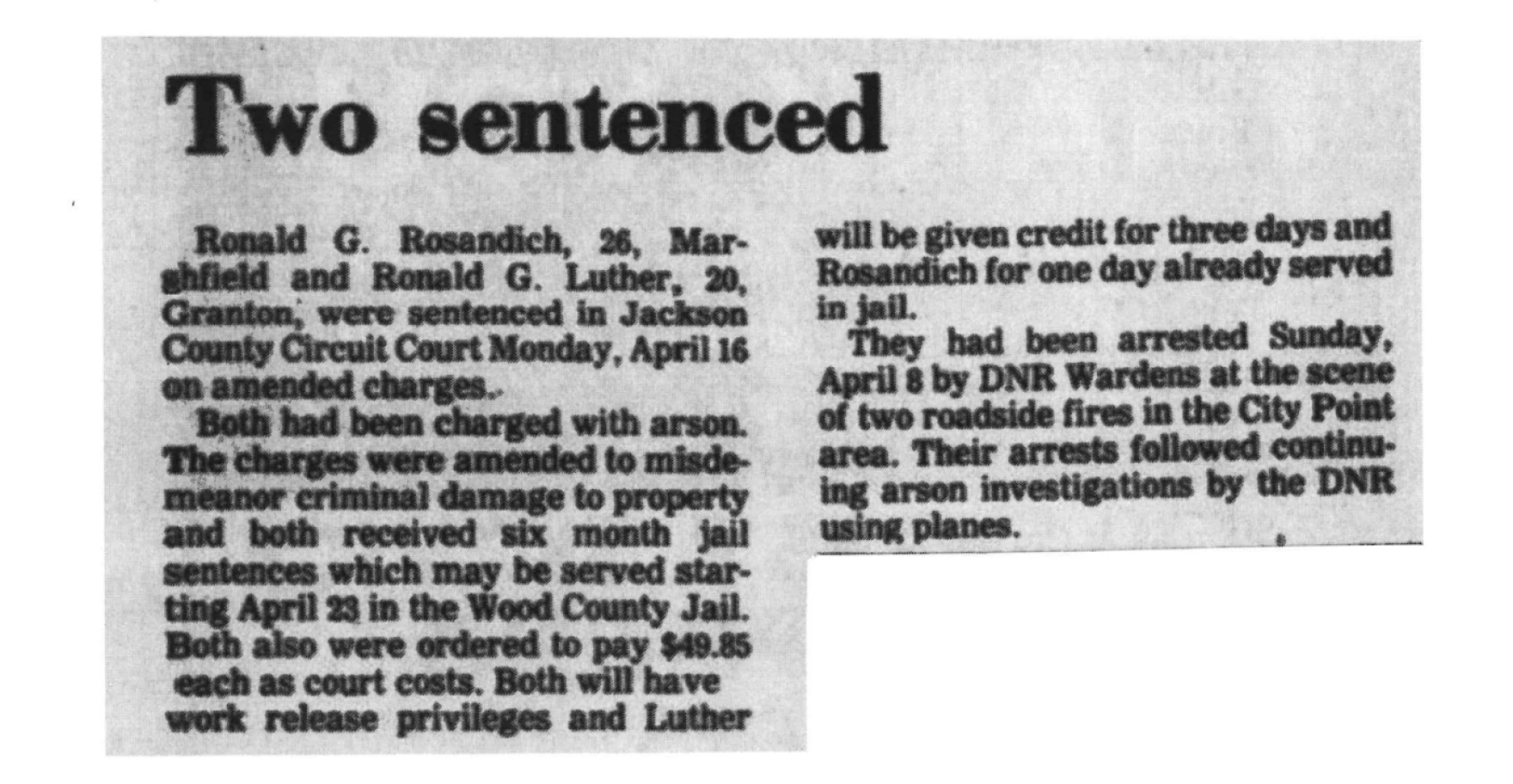
A newspaper article from The Banner Journal on April 18, 1984. (credit: Mary I. Murray Woods / Black River Falls Public Library)
WANSCHURA: A little over a week later, Ronald Luther and Ronald Rosandich are sentenced to six months in jail, and required to pay some fines. They never admit to starting any of the other fires that season, but Dave Zeug says he’s 100 percent convinced it was them.
And to his point: Jackson County is still really dry for several more weeks, but after the two Ronalds are caught – the suspicious forest fires stop.
ZEUG: I tell ya, it was just, it was a good feeling. It was a feeling of accomplishment, I guess, for lack of a better choice. And that we got some guys off the area and taught them a lesson that they needed badly to have before they would have started real chaos.
WANSCHURA: I tried reaching both Ronalds many times but never heard back.
Dave says being a part of this mission – catching arsonists in the very act – was a highlight of his career. It’s also a lesson that sometimes it’s okay to think outside the box a little bit. Put a plane up in the air and see what happens.
There’s one more thing that sticks in Dave’s mind about the day they caught the arsonists. As they were packing up and getting ready to leave the scene of the fires, Dave remembers the pilot made a final pass overhead.
ZEUG: Darwin came by, and I don’t know how low he was, but he was low. And buzzed over where we were sitting by the fire, and he wagged the wings on his plane back and forth. It was like a salute to a job well done.
(sound of plane flying overhead)

A Wisconsin Department of Natural Resources spotter plane flies just above the treetops. (credit: Wisconsin DNR)
Catch more news at Great Lakes Now:
Points North: More Than Just a Filet of Fish
Points North: The Quest for Kiyi
Featured image: A forest ranger for the Wisconsin Department of Natural Resources looks on at a wildfire in Jackson County in 1977. (credit: Wisconsin DNR / Dave Zeug)


